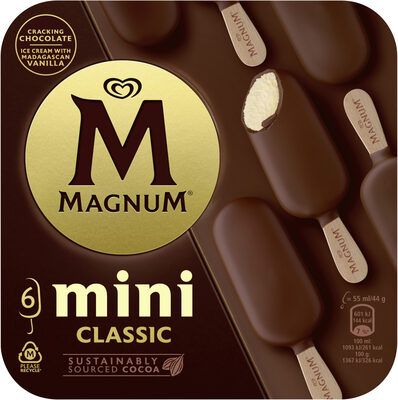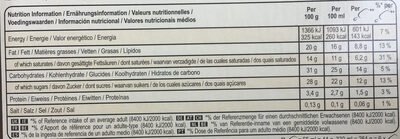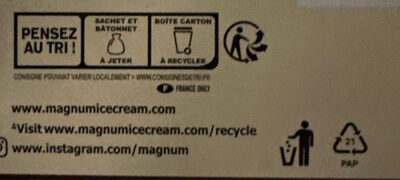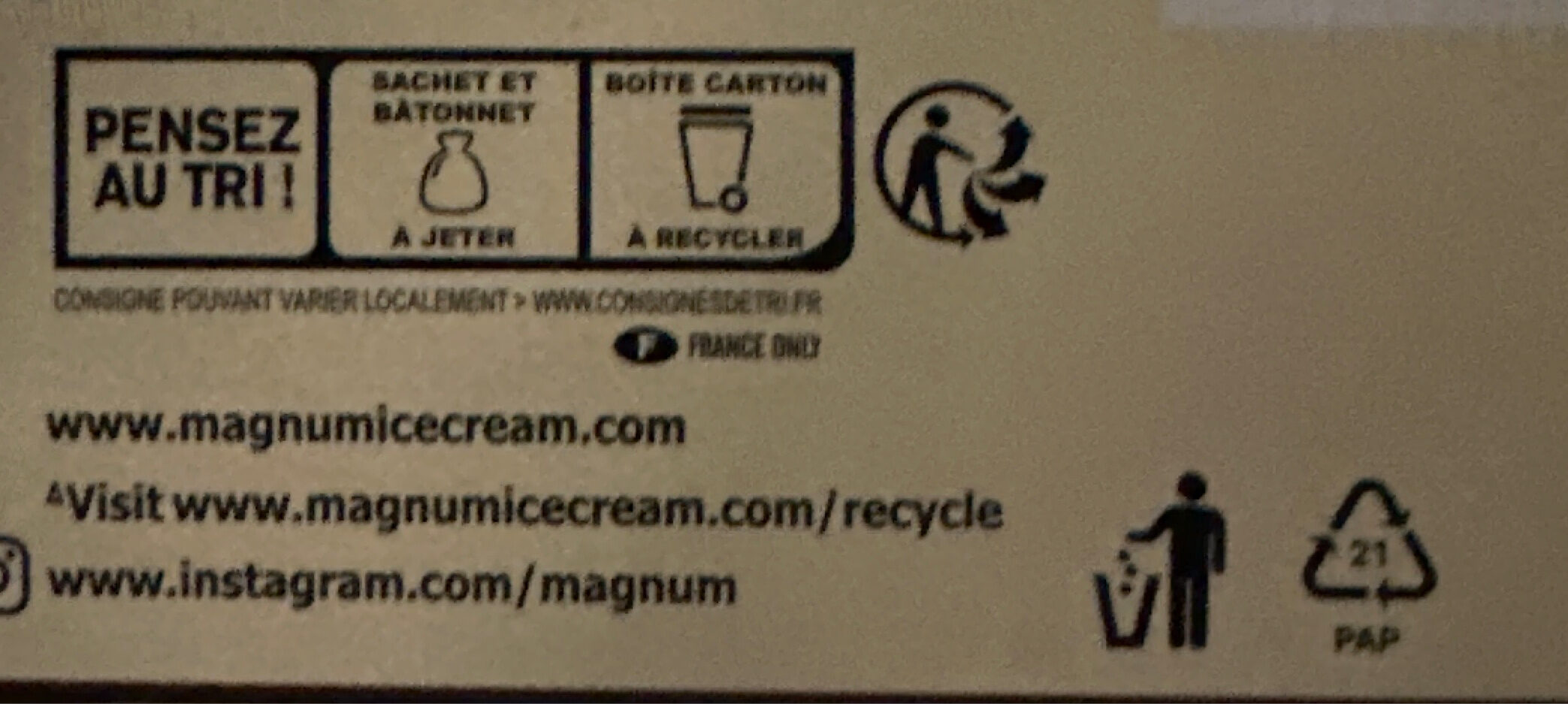Magnum Glace Bâtonnet Mini Classic x6 330ml - 330 ml / 264 g
This product page is not complete. You can help to complete it by editing it and adding more data from the photos we have, or by taking more photos using the app for Android or iPhone/iPad. Thank you!
×
Some of the data for this product has been provided directly by the manufacturer Unilever France.
Barcode: 8714100635674 (EAN / EAN-13)
Ainm coitianta: Glace vanille à l'arôme naturel de vanille de Madagascar enrobée de chocolat au lait (33%).
Quantity: 330 ml / 264 g
Packaging: en:Box, Cairtchlár, en:Film, en:Wrapper, en:container, fr:Point vert, fr:Tidyman wastebasket
Brandaí: Magnum
Catagóirí: en:Desserts, en:Frozen foods, en:Frozen desserts, en:Ice creams and sorbets, Uachtar reoite, en:Ice cream bars, en:Vanilla ice cream bars
Labels, certifications, awards:
en:No gluten, en:Green Dot, en:Rainforest Alliance, Rainforest Alliance Cocoa, Tidy man, Triman


Origin of the product and/or its ingredients: Allemagne
Siopaí: Franprix
Country: An Ostair, An Bheilg, An Fhrainc, An Ghearmáin, Poblacht na hÉireann, An Ísiltír, An Spáinn, An Eilvéis
Matching with your preferences
Other information
Ullmhúchán: Sortez vos glaces du congélateur quelques minutes avant de les déguster, afin de profiter pleinement de leurs saveurs.
Conservation conditions: A conserver à -18°C.
Seirbhís do chustaiméirí: Magnum Relation Consommateurs, Unilever France, 20 rue des Deux Gares 92842 Rueil-Malmaison Cedex
Report a problem
Data sources
The manufacturer Unilever France uses Equadis to automatically transmit data and photos for its products.
Product added on ag kiliweb
Last edit of product page on ag org-unilever-france-gms.
Product page also edited by aleene, countrybot, date-limite-app, dieteticienne, driveoff, ecoscore-impact-estimator, g123k, gmlaa, gramuche, inf, itsjustruby, magasins-u, moon-rabbit, october-food-facts, openfoodfacts-contributors, packbot, parent, prepperapp, roboto-app, thaialagata, thomas-1, unilever-france, yuka.ZTVncENLbFlnUDhqaThabDV6Q08yZDFlNDYyR2ZtVzhBTzVLSVE9PQ, yuka.sY2b0xO6T85zoF3NwEKvlhdYd97TnmnOax_Ql1GJ94vQAZy4ZMhtz9fFMKg.
Last check of product page on ag october-food-facts.














